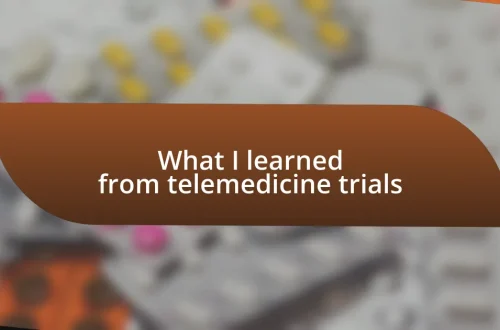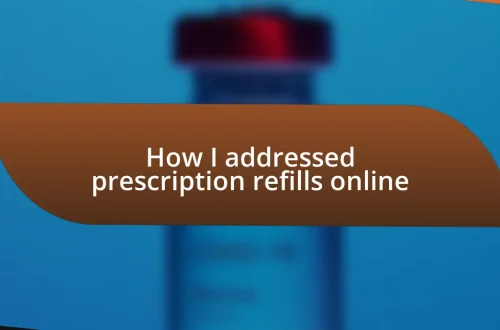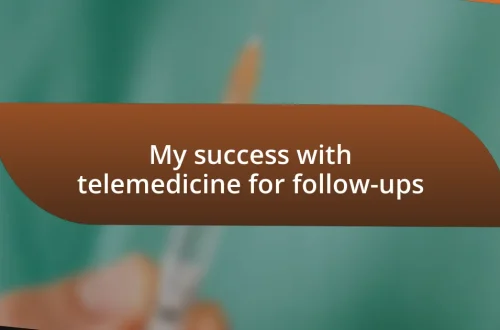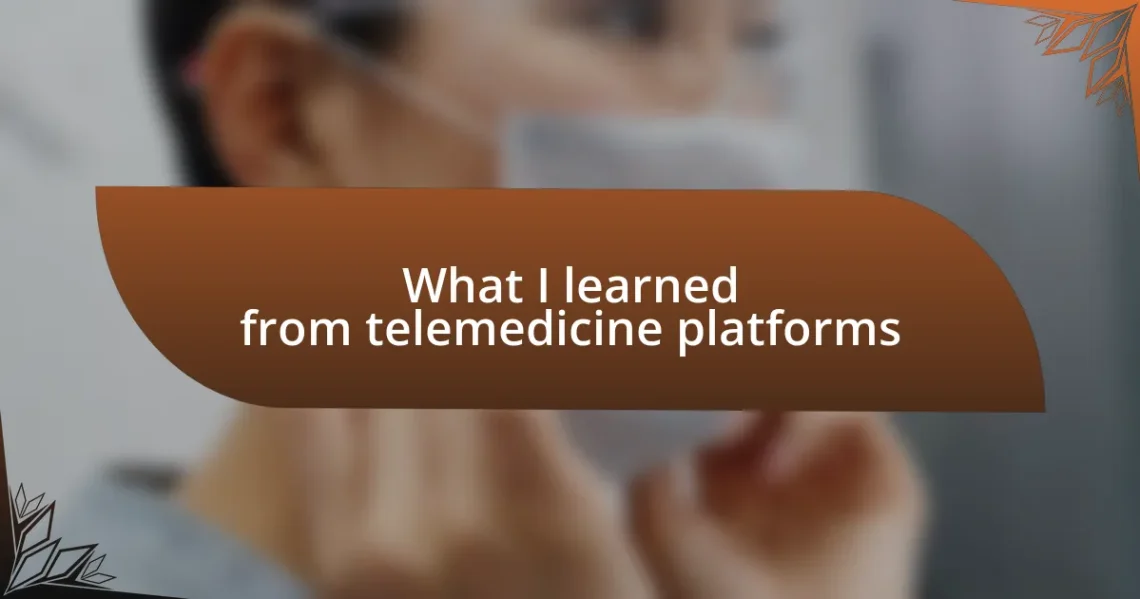
What I learned from telemedicine platforms
Key takeaways:
- Telemedicine enhances healthcare access by offering convenience, increased accessibility, and cost-effectiveness.
- Key features such as video consultations, electronic medical records access, and secure messaging improve patient experience and engagement.
- Challenges include technology issues, lack of personal interaction, and privacy concerns, which can impact user satisfaction.
- The future of telemedicine may be shaped by advancements in AI, virtual reality, and wearable technology, promoting proactive and personalized care.
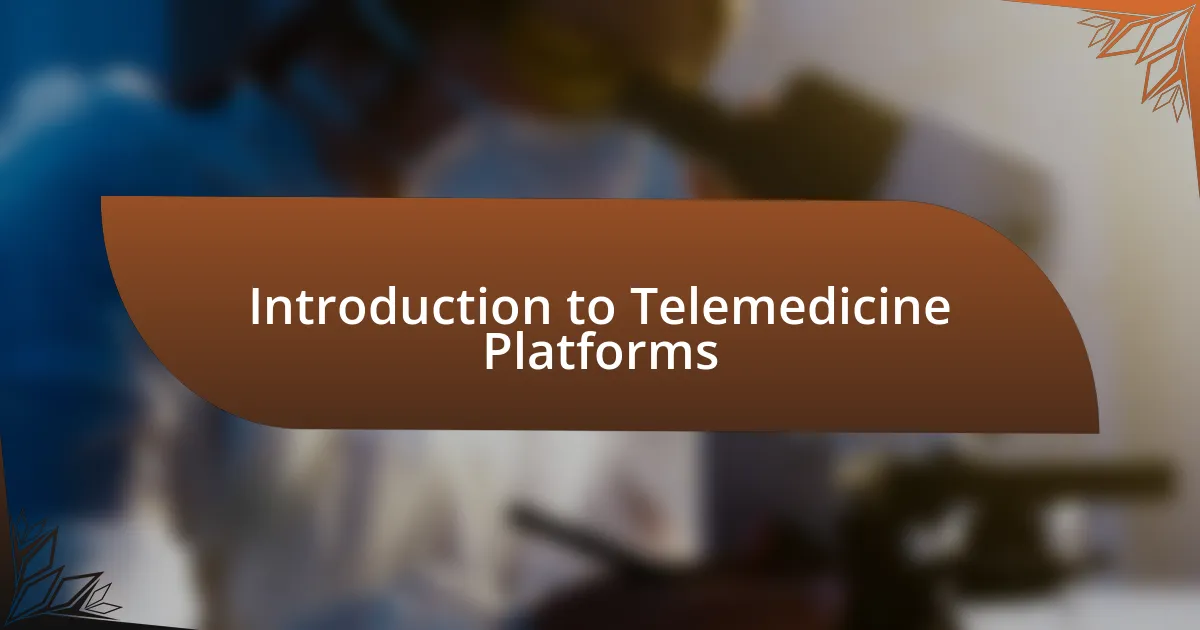
Introduction to Telemedicine Platforms
Telemedicine platforms have reshaped the way we think about healthcare access. Reflecting on my own experiences, I remember a time when scheduling an appointment felt like climbing a mountain, fraught with logistical challenges. Now, with just a few clicks, I can connect with healthcare professionals from anywhere, which brings a level of convenience I never thought possible.
The technology behind these platforms offers more than just virtual visits; it creates an entire ecosystem for patient care. I once had the opportunity to use a telemedicine app during a particularly stressful week. It was comforting to know that expert advice was just a call away, alleviating my concerns in the midst of juggling work and life responsibilities. Do you remember a moment when you wished you had immediate medical guidance? That’s the magic of telemedicine.
What’s remarkable is how these platforms empower patients. They facilitate a more proactive approach to health, allowing me to manage my care rather than just react to issues as they arise. It makes me wonder how many of us take advantage of this opportunity to prioritize our health more effectively.
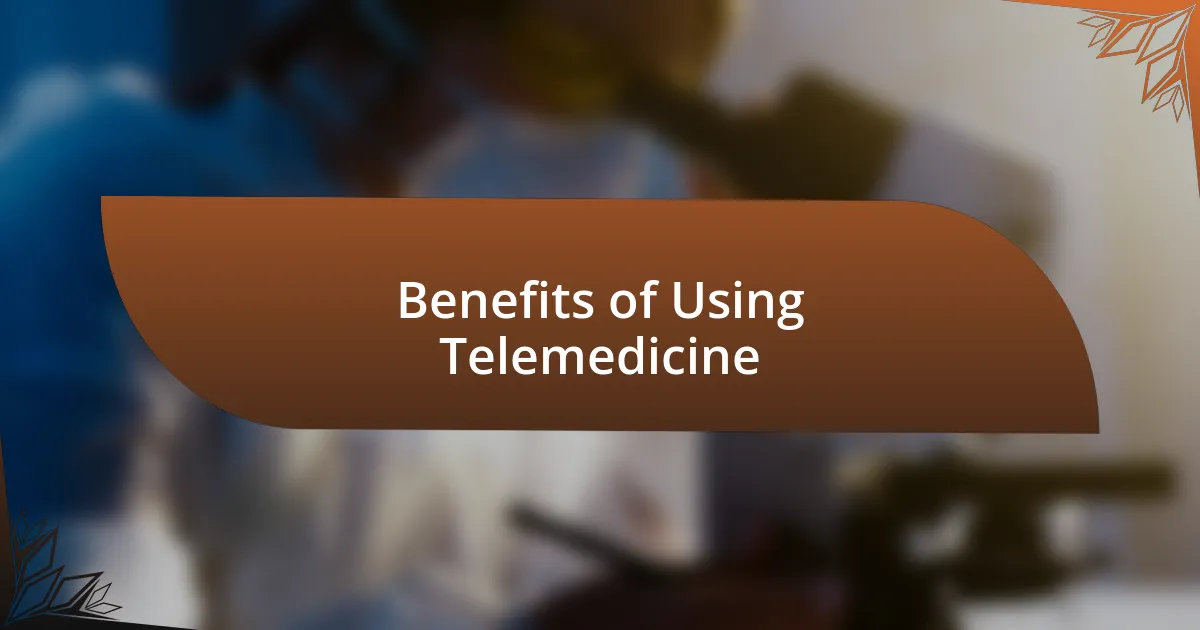
Benefits of Using Telemedicine
Telemedicine has transformed the way we access healthcare, making it more convenient and efficient. I can distinctly recall a time when I was feeling unwell but didn’t want to sit in a crowded waiting room full of others. The ability to speak with a healthcare professional from the comfort of my home felt not only relieving but also safe. This immediate access to care has been a game-changer for many, allowing for prompt medical advice without the usual barriers.
Here are some key benefits of using telemedicine:
- Increased Accessibility: I’ve spoken with friends who live in rural areas, and they often struggle to find healthcare options nearby. Telemedicine bridges that gap effortlessly.
- Time-Saving: Forgetting long drives and waiting hours—telemedicine allows for quick consultations that fit into my schedule.
- Comfort and Privacy: I enjoy discussing health matters in my own space, where I feel relaxed. It makes the conversation less intimidating and more candid.
- Cost-Effectiveness: Many times, I’ve noticed that virtual visits can be cheaper than in-person ones. This financial aspect can make a huge difference for many individuals.
- Continuity of Care: I’ve also benefitted from being able to easily follow up with my doctor, ensuring that my treatment plan is monitored every step of the way.
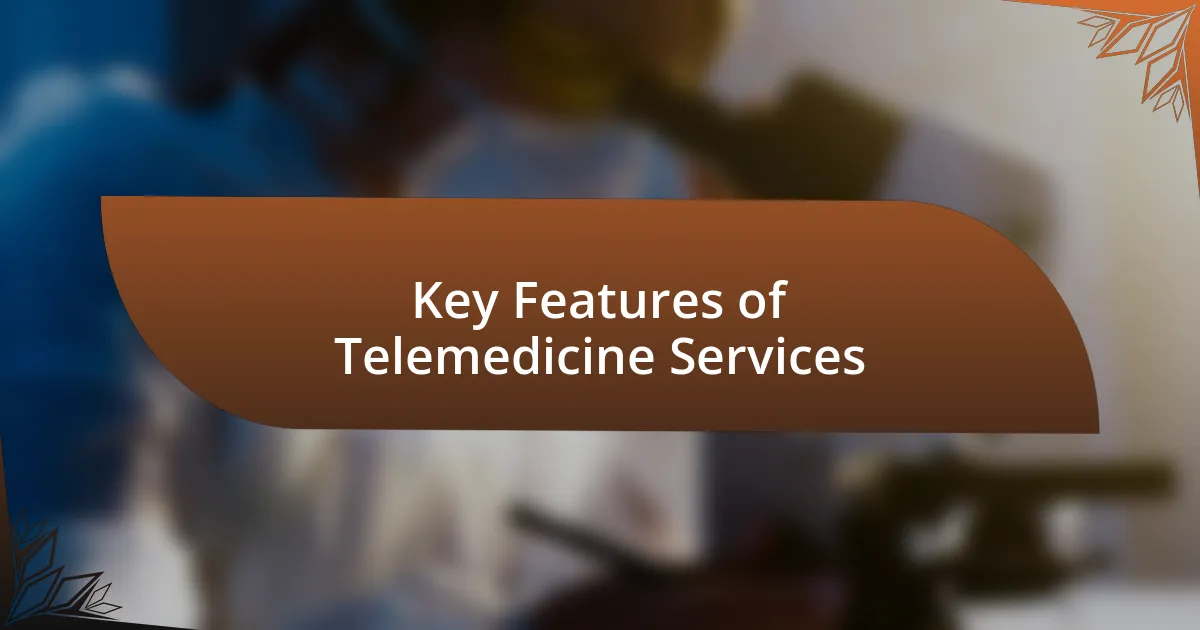
Key Features of Telemedicine Services
Telemedicine services come equipped with several key features that significantly enhance the patient experience. For instance, I’ve found that video consultations allow for real-time interaction, which can be just as effective as meeting in person. The visual connection adds a layer of trust and engagement that makes discussing my health easier.
Another crucial feature is the ease of access to electronic medical records (EMRs). I remember logging into one telemedicine platform and being able to review my health history and lab results instantly. This feature not only empowers me to take charge of my health but also ensures that I am fully informed during consultations.
Finally, secure messaging functionality has changed how I communicate with my healthcare provider. I appreciate being able to ask questions or send updates without the pressure of a formal appointment. It creates a more relaxed atmosphere, making healthcare feel like a partnership rather than a transaction.
| Feature | Description |
|---|---|
| Video Consultations | Real-time interaction that fosters trust and engagement. |
| Access to EMRs | Immediate access to personal health records, enhancing informed decision-making. |
| Secure Messaging | Convenient communication with healthcare providers, promoting a relaxed dialogue. |
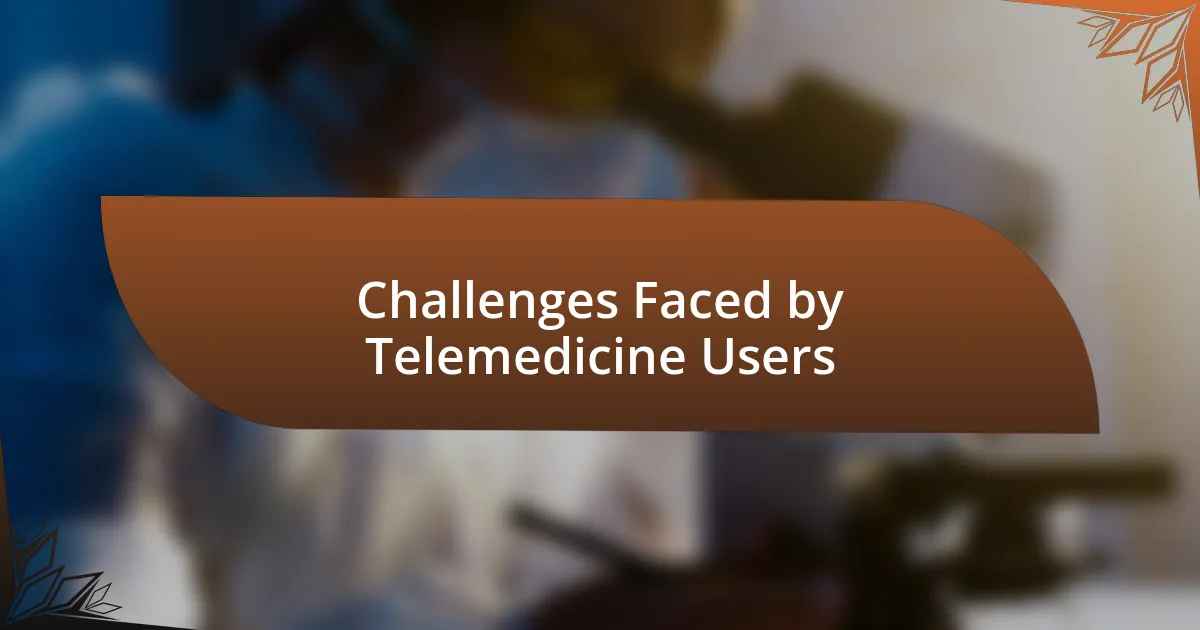
Challenges Faced by Telemedicine Users
It’s hard to ignore the technology hurdles many users face when venturing into telemedicine. I remember the first time I tried to set up a video call; I was so excited but ended up grappling with connection issues and finding the right platform. It’s frustrating when a technical glitch interrupts what could be an important consultation—how many others have felt that same anxiety?
Another challenge arises from the lack of personal interaction. During one of my online appointments, I felt a distinct absence of the comforting human touch I usually experience in face-to-face visits. It’s amazing how much body language and physical presence contribute to trust in healthcare. It makes me wonder: are we sacrificing something essential when we shift to a screen?
Moreover, I’ve noticed privacy concerns lurking in the background. When discussing sensitive health matters, I often question how secure my information really is. I can’t be the only one who thinks twice before sharing personal details in a digital setting—are those little peace-of-mind reassurances enough to quell our worries?
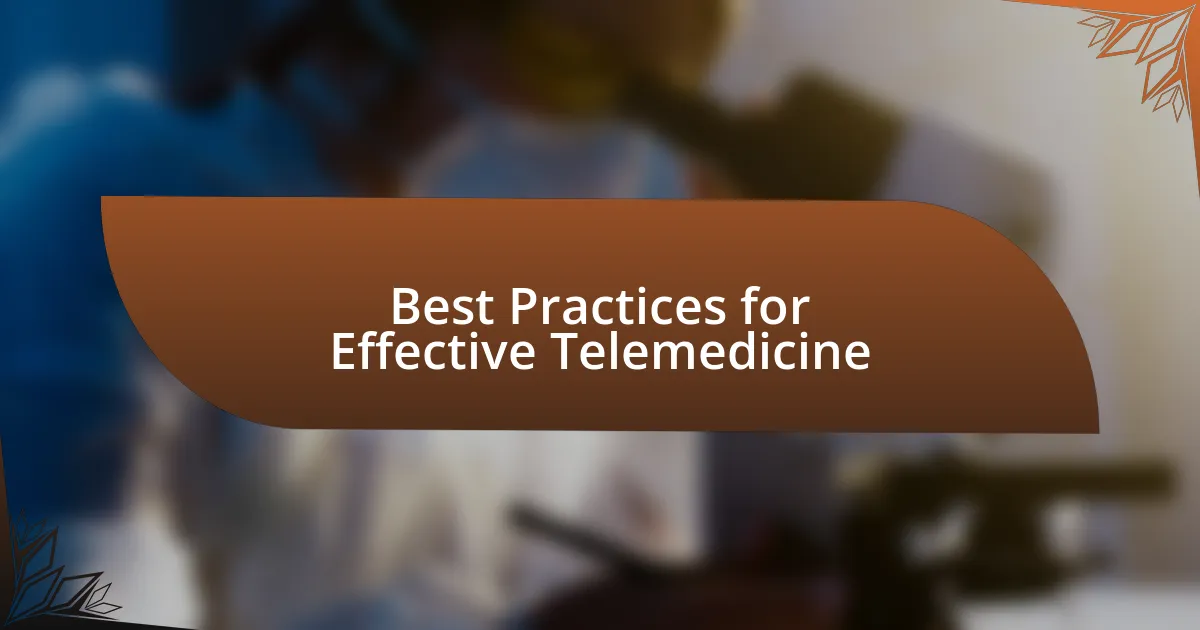
Best Practices for Effective Telemedicine
One of the best practices I’ve learned is to ensure a robust technological setup before a telemedicine appointment. In my early experiences, I often rushed into consultations without testing my video or audio settings. Once, I logged in, only to realize I barely had a signal. I now always conduct a quick check, because I’ve found that it really minimizes stress and helps the consultation run smoothly. How can we expect effective communication when tech issues derail our interactions?
Clear communication is another cornerstone of effective telemedicine. I recall a particularly enlightening appointment where my provider took extra time to explain my treatment plan step by step, using simple language and encouraging me to ask questions. That experience reinforced for me the importance of clarity. After all, when we’re in a virtual environment, misunderstanding can easily occur. Have you ever left a consultation feeling more confused than informed? It’s a common feeling, and it can be avoided with attentive dialogue.
Additionally, establishing a comfortable environment at home can enhance the telemedicine experience. I remember one session where I made an effort to set up my room with good lighting and a calming backdrop. This small change helped me feel at ease during the appointment, allowing me to focus entirely on my doctor’s advice. Creating a personal space that feels safe is incredibly important—what other simple tweaks could transform our virtual health experiences?
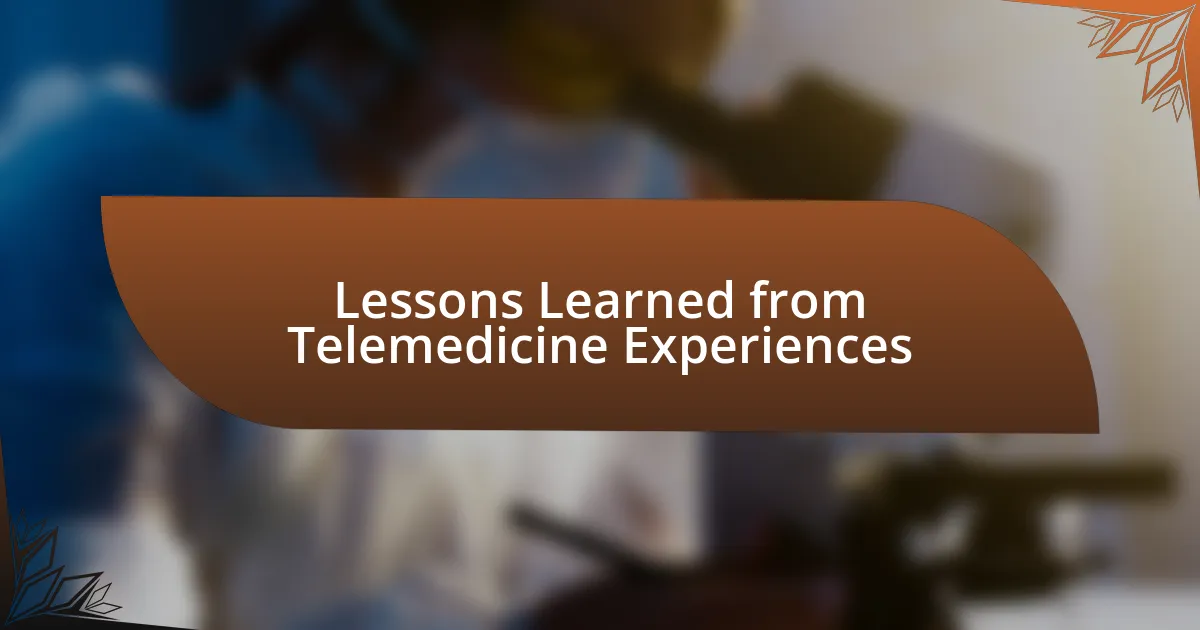
Lessons Learned from Telemedicine Experiences
One valuable lesson I’ve gathered from my telemedicine experiences is the significance of setting realistic expectations. During my first few video calls, I naïvely thought they’d be like in-person visits, only to discover that the flow was different. I learned to communicate openly with my provider about my concerns and what I hoped to achieve from the session, making the interaction feel more collaborative. Have you ever felt let down because your expectations clashed with reality? I know I have, and it’s crucial to be on the same page to foster effective communication.
In my journey through telemedicine, I’ve also come to appreciate the power of non-verbal cues, even in a digital setting. One time, while waiting for my provider to join the call, I noticed my own anxious fidgeting. It struck me how these little gestures, often overlooked, could convey emotion and establish connection. It made me realize that, despite the screen separating us, I had the ability to express myself in a meaningful way. How often do we think about how our body language impacts our messages? Harnessing that awareness can truly elevate the telehealth experience.
Lastly, the importance of follow-up has been a lesson that resonates deeply with me. After an initial telehealth session, I found myself anxious about the next steps in my treatment. My provider’s proactive message, summarizing our discussion and next actions, brought tremendous relief. It reinforced the idea that taking a few extra moments to send a follow-up note can significantly enhance patient satisfaction. Have you ever wished for more clarity after a medical appointment? Providing that reassurance can go a long way in building trust and comfort in the telemedicine world.
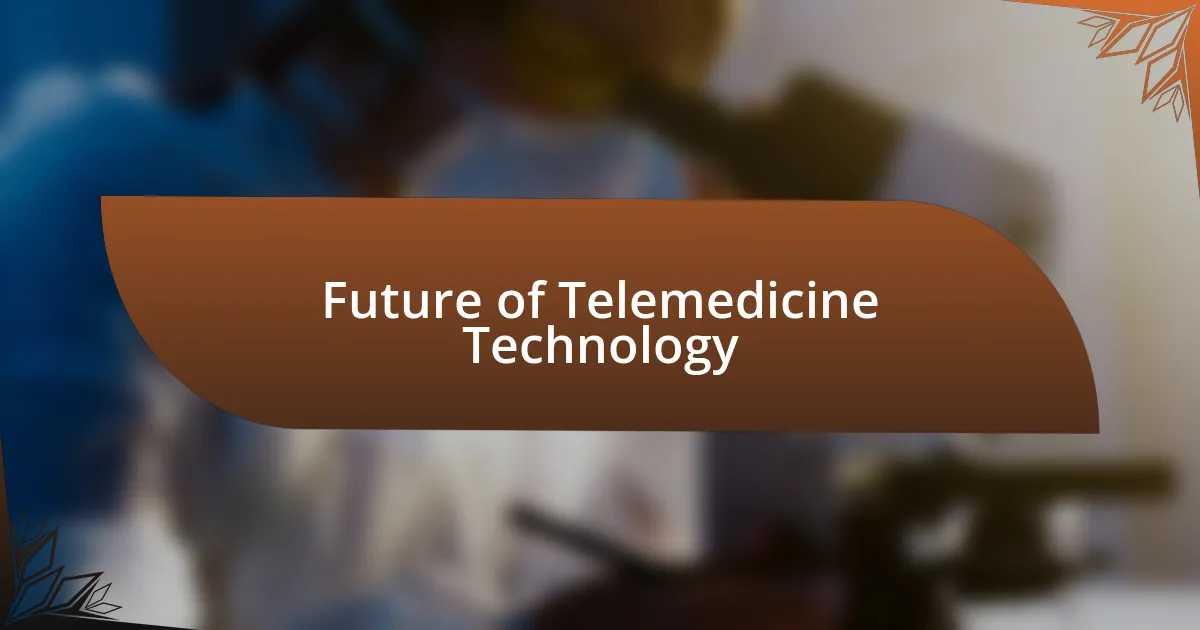
Future of Telemedicine Technology
As I’ve delved into the future of telemedicine technology, I’ve noticed how artificial intelligence (AI) is increasingly becoming a game-changer. For instance, I once used a chatbot to triage my symptoms before a video consultation, and it felt almost like having a personal assistant guiding me through my health. Isn’t it fascinating how these tools can enhance efficiency while also empowering patients to take charge of their healthcare journey?
Looking ahead, the integration of virtual reality (VR) in telemedicine intrigues me. Imagine being able to participate in a therapy session with a VR headset, creating a more immersive environment that fosters connection and engagement. I remember the first time I tried a VR platform for relaxation techniques; it transported me entirely and helped me focus in a way that a traditional call never could. How often do we underestimate the role of environment in our healing processes?
Moreover, wearable technology is set to expand its influence by providing real-time data to clinicians, which I believe will transform personalized care. I recall a time when my fitness tracker alerted me to an irregular heartbeat, prompting me to consult my doctor immediately. If everyone had access to such empowering tech, could we not prevent health issues before they escalate? The future holds immense potential for making healthcare more proactive and personalized, and I can’t help but feel optimistic about what’s to come.


